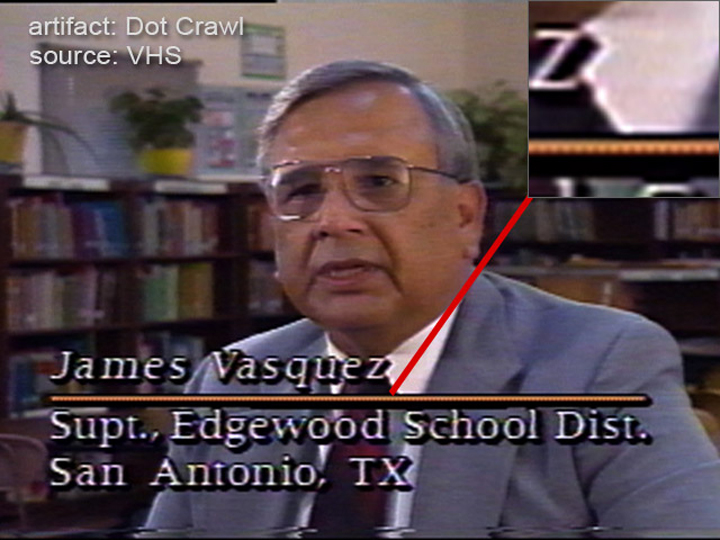A composite video artifact, dot crawl occurs as a result of the multiplexing of luminance and chrominance information carried in the signal. Baseband NTSC signals carry these components as different frequencies, but when they are displayed together, the chroma information can be misinterpreted as luma. The result is the appearance of a moving line of beady dots. It is most apparent on horizontal borders between objects with high levels of saturation. Using a comb filter to process the video can reduce the distraction caused by dot crawl when migrating composite video sources, and the artifact may be eliminated through the use of s-video or component connections. However, if it is present in an original source transfer, it might be compounded in subsequent generations of composite video transfers.
Can it be fixed?
Yes, dot crawl can be remedied by using an S-Video or component video output on the playback VTR, if available. If not, many TBCs have integrated comb filters which may help reduce dot crawl if engaged, though some purists may debate this approach.
Example(s)


